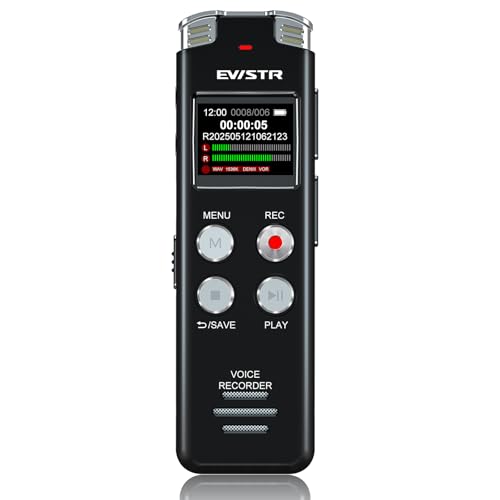When winter rolls in and the hills turn white you might find yourself itching for some sledding thrills. But have you ever wondered how the pros make it look so effortless? There’s a whole world of skill and strategy behind those fast runs and smooth turns.

You don’t need a fancy sled or years of training to have more fun on the slopes. With a few insider tips from a pro sledder you’ll be ready to take your next ride to the next level. Get ready to discover what really makes a great sledding experience and pick up some tricks you’ll want to try right away.
Meet the Pro Sledder
You’ll meet Alex Rivera, a competitive sledding athlete who’s raced across international circuits since 2015. Alex’s name pops up in winter sports magazines, especially after winning the 2022 Arctic Challenge in Norway. You see Alex training with the US national sledding team and coaching younger athletes in Vail. Experience in European ice tracks gives Alex a tactical edge—track reading, sled preparation, and risk management rank highest in Alex’s skill set. You find Alex’s style efficient: minimal movement, smart steering, and an intense focus at high speeds. Watching Alex’s runs helps you notice subtle techniques that turn a regular sled outing into a record-breaking descent.
Path to Becoming a Pro
Mastering sledding as a dedicated snow sports enthusiast means tracking every stride from the first run to international competitions. Every skill you gain brings you closer to riding like a pro on winter’s fastest tracks.
Early Beginnings
Discovering sledding often starts with simple plastic sleds and backyard hills, like the ones you find in Vail or Lake Placid. Focus sharpens after realizing the thrill of speed and competition—watching world-class sledders such as Felix Loch or Erin Hamlin amplifies your passion. Choosing local snow sports clubs or youth leagues helps you build foundation skills, as you learn balance, turning, and reading icy terrain. Gear may be basic at first: helmets, gloves, and plastic or wooden sleds offer enough opportunity to practice steering and picking up speed, especially on community slopes after the first major snowfall.
Key Milestones and Achievements
Tracking your progress means setting specific goals and celebrating each one. Entering your first local race or sliding on a true ice track in places like Park City marks a leap in your journey. Making regional teams, then qualifying for the national circuit, opens the door to meeting pros, learning advanced tactics, and gaining sponsorships. Achieving major benchmarks—like Alex Rivera’s 2022 Arctic Challenge win—often takes years of dedicated winter seasons, record-breaking runs, and consistent training sessions. Earning spots on international teams or ranking in top championships highlights not only performance but also your growing tactical and technical edge, from quick starts to perfect sled control at every run.
Inside the Interview: Essential Tips and Tricks
Getting inside Alex Rivera’s routine reveals straightforward habits that add up quickly on the hill. Direct advice from a professional makes each run smoother, faster, and safer.
Training and Preparation
You benefit most from consistency and variety in your sledding sessions, according to Alex. Practicing every week, even on gentle slopes, builds reflexes and muscle memory. Mixing interval sprints with endurance runs helps develop explosive power and stamina. Watching GoPro footage of your own rides, as Alex does after major races, highlights form issues and areas for improvement. Off-snow, you gain strength and stability with balance board drills and simple core circuits such as planks or Russian twists.
Gear and Equipment Insights
Small adjustments make your sled feel custom-built, Alex says. Waxing your runners before each outing, especially in fluctuating conditions, improves glide—graphite wax for dry snow and Teflon-based variants for wet snow give the best results. Tightening bolts, checking steering ropes for soft spots, and taping loose equipment stops surprises mid-run. You dress in layered synthetics for warmth but keep fitted clothing to reduce wind resistance, just like the pros. Bring two sets of goggles for changing light; mirrored lenses handle bright days, and amber lenses boost contrast in flat light.
Mastering Sledding Techniques
Positioning shapes speed. Alex keeps elbows tight, feet flexed, and head low, which minimizes drag and improves steering control. Shifting weight slightly before turns, rather than during, lets you grip the inside edge and avoid skidding. Subtle braking—digging your heels for just a split second rather than dragging—slows your sled without killing momentum. On bumpy sections, you absorb shock by relaxing your grip and letting your knees act as natural shock absorbers, as Alex demonstrates in slow-motion breakdowns. Practicing short, controlled carves on small hills gives you rapid feedback on edge control and steering finesse before trying full-length runs.
Overcoming Challenges on the Slope
Reading the slope forms the core of every great sled run. Analyze the terrain before your first descent—spot ice patches, hidden ruts, and changes in gradient. Adjust your approach every time you see shaded corners or new snowdrifts. Swift corrections and preparedness prevent the unexpected from stopping your ride.
Handling speed wobbles requires calm focus. Stay loose in your arms and legs, gripping the sled with your calves for added stability. Breathe evenly—relaxed muscles respond faster than tense ones. Experienced sledders like Alex take a moment to reset after a shaky section, even in mid-run, using a rhythm: three deep breaths, refocus ahead, and ease into the next turn.
Managing visibility on snowy or low-light days impacts every decision. Wear a tinted visor or goggles during whiteouts to boost contrast and spot the track. Keep your head low and tuck to minimize blown snow hitting your face. Pro sledders test lighter tints during dusk or flat light, ensuring they never miss shifts in terrain or obstacles.
Recovering after a crash or slip strengthens your confidence. Get back on the sled as soon as you’ve checked for injuries and scanned your surroundings. Remember—Alex recalls sliding off an icy curve at the La Plagne track in France, then immediately walking the line to study what went wrong. Each challenge builds sharper instincts and a deeper sense of the slope’s unique rhythm.
Advice for Aspiring Sledders
Focus on fundamentals: Balance, steering, and awareness define your sledding success. Refine each skill on local hills, then test them on longer runs for real growth.
Invest in practice: Weekly practice sessions, like those used by pro athletes, accelerate improvement. Alternate between controlled sprints for technical sharpness and longer descents for endurance, using run data or videos to track progress.
Select reliable gear: Well-waxed runners, stable sleds, and layered, aerodynamic clothing all add advantages. Check equipment after every ride, since even minor issues can affect your run.
Watch experienced sledders: Observing local pros, like Alex Rivera, in action teaches you subtle steering adjustments, positioning mid-descent, and efficient energy use.
Connect with clubs: Local snow sports organizations, youth groups, and community races build your skills and open chances for mentorship. You’ll gain confidence by learning alongside others who share your passion.
Prioritize safety: Assess hills for ice patches, unexpected bumps, or changes in light. Protective gear, including helmets and goggles, protects you while freeing you to push your limits.
Celebrate small wins: Track your progress—like mastering sharper turns or managing tougher slopes—and set new goals each season. This keeps motivation high and helps you enjoy every winter ride even more.
Conclusion
Whether you’re chasing speed records or just looking for more fun on the hills you’ve got plenty of inspiration and practical advice from Alex’s journey. Every sled ride is a chance to try something new and build your confidence.
Trust your instincts pay attention to the details and remember that progress comes one run at a time. With the right mindset and a little curiosity you’ll find that each trip down the slope brings its own rewards. Stay safe out there and enjoy every snowy adventure!
















